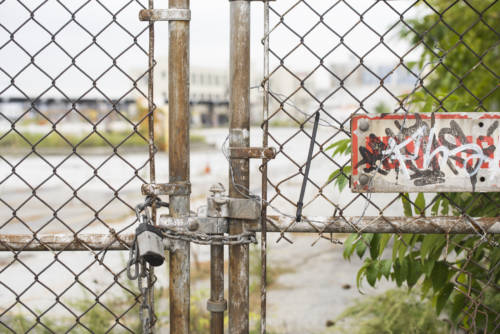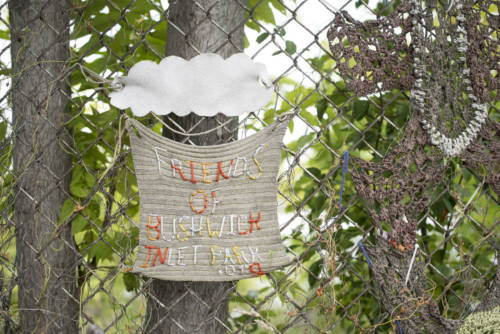
Bushwick Inlet Park Continues To Be Brooklyn’s Biggest “Green” Controversy
Over a decade ago, the City of New York promised residents of Williamsburg, Brooklyn– one of the trendiest but famously gentrified neighborhoods in New York– that a 28-acre green space to be known as Bushwick Inlet Park would be built along the waterfront in a theretofore abandoned stretch beginning around N. 12th Street and Kent Avenue.
In exchange for community support in the rezoning of luxury apartments in another section of the neighborhood, the city brokered a deal that is still unfolding ten years later, with no new park in sight. The battle over Bushwick Inlet Park, moreover, continues to be one of Brooklyn’s most gripping “green” controversies. In a city riddled with confusion over what to preserve and what to rebuild, conversation about the importance of green space and quality of life have never been more visible.
In a New York Times article written about what became known as the Bushwick Inlet Park controversy, Noah Remnick writes a concise history of the conflict. “In 2005, almost 200 blocks of Williamsburg and Greenpoint were rezoned to accommodate the construction of the high-end condominiums and rental buildings that now hug the water’s edge,” Remnick writes. He continues:
“To moderate the effect on the community, which activists say sorely lacks green space, the city committed to building Bushwick Inlet Park on five and a half blocks along the East River. So far, only a corner of it has been created, at the southern end.
The city’s efforts to fulfill its promise have been complicated by the difficulty of buying land from different owners to piece the park together, not to mention the eventual cleanup of decades of industrial pollution. The price of the project has catapulted past the original estimates of $60 million to $90 million made when Michael R. Bloomberg, a Republican turned independent, was mayor. The city has already spent $198 million on land, and $25.8 million on development. But the biggest plot still eludes the project: an 11-acre swath in the middle of the footprint, held by Norman Brodsky, owner of CitiStorage.” (via The New York Times)
***
The owner of the CitiStorage property, Norman Brodsky, expressed interest in selling 11 acres of land that sits at the center of the future park in a 2011 interview with The New York Times, in which Brodsky said that he would accept the same per-square-footage price as the former car rental property, which was around $120 million (not including the cost that the city would incur if they chose to buy out or relocate his business). When the city offered Brodsky $100 million for Bushwick Inlet Park, locals– feeling they were being denied the city’s promise of more green space in the neighborhood– camped out and protested in July of 2016, to no perceived avail.
As of now, the future of Bushwick Inlet Park remains murky, and it’s unclear as to which side will ultimately gain satisfactory use of the property. Advocates for the park decry the city’s timid response to commercial interest, fearing that this is the first of many reneged promises to stop rampant overdevelopment in notoriously gentrified Williamsburg. While local parks like North Brooklyn Farms, East River State Park, and McCarren Park remain neighborhood staples, the promise of reclaiming land and reverting it back to green space increasingly appears– much like the dream of an affordable New York– to be a forgotten dream of the past.



































